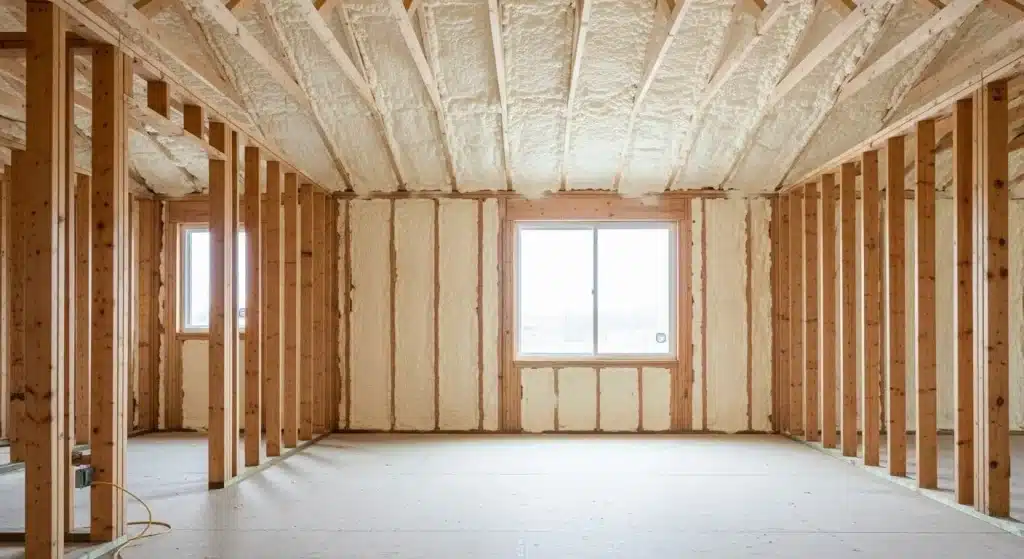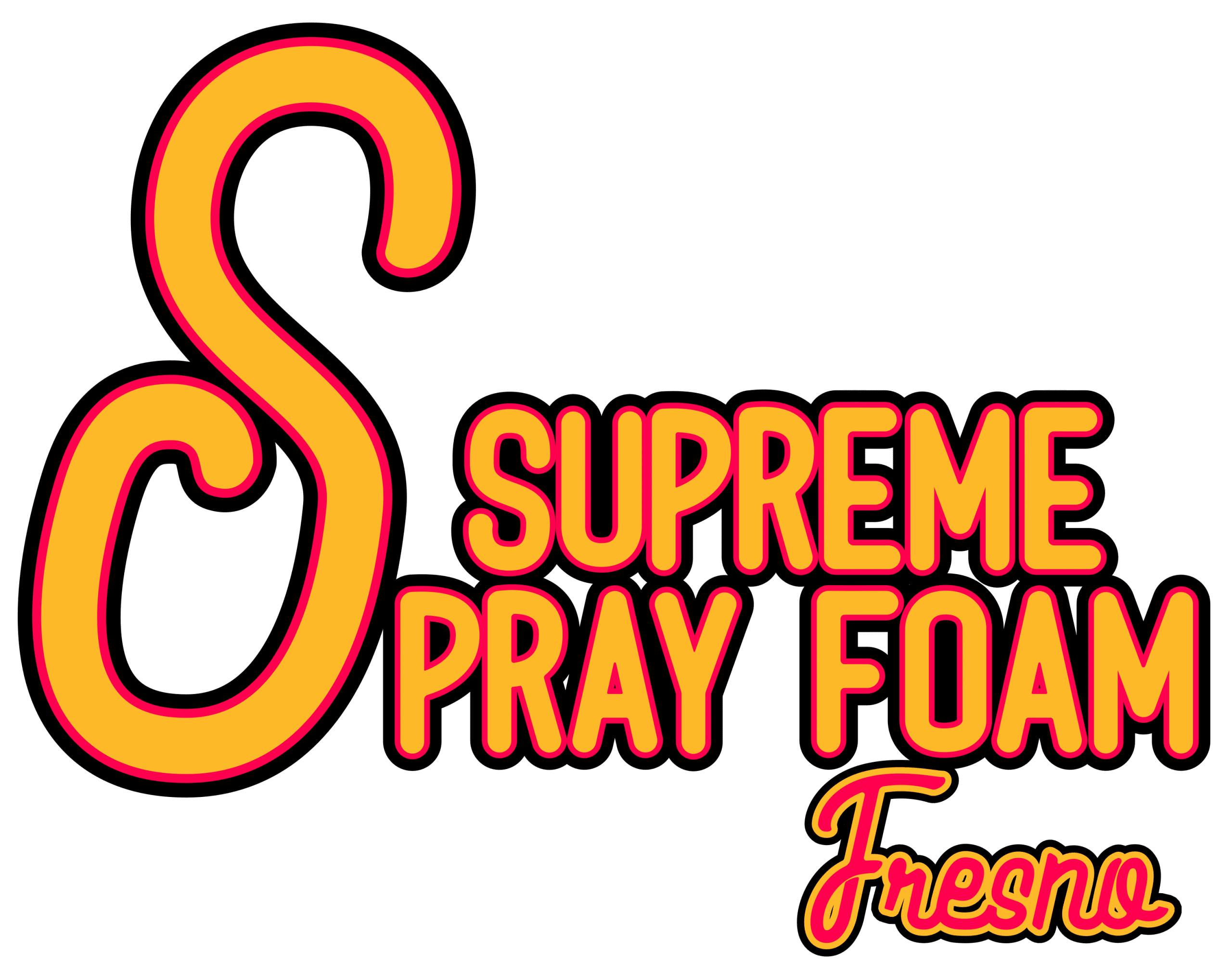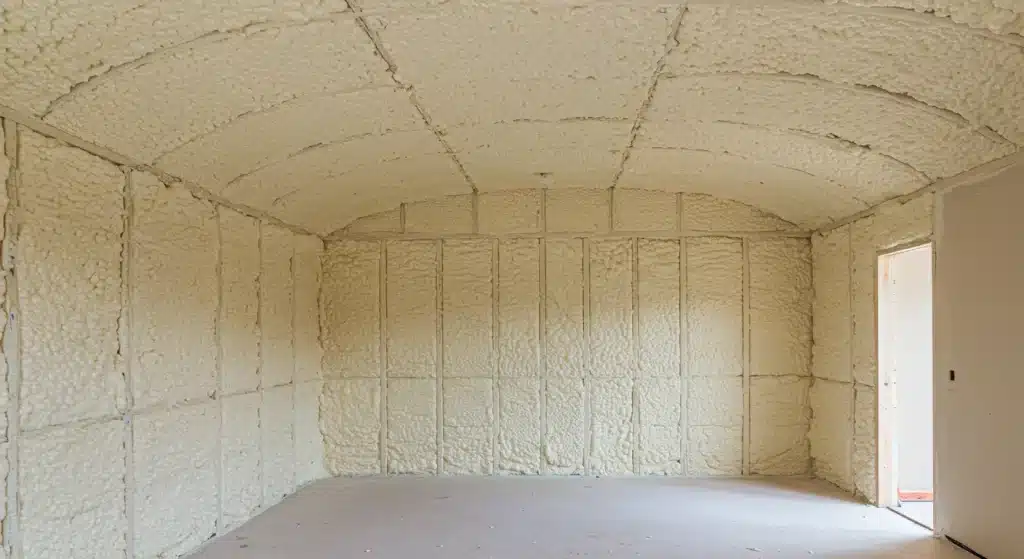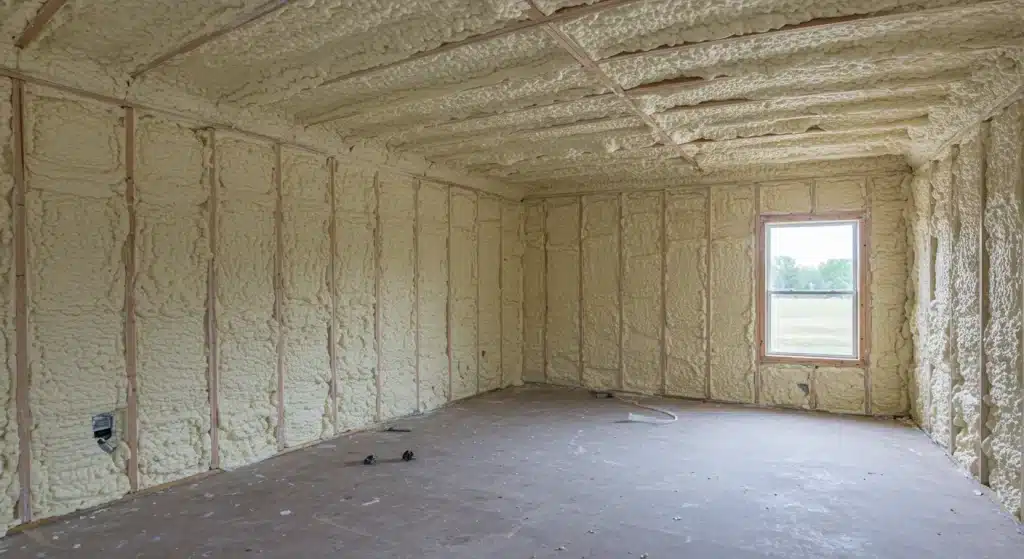When planning a home renovation in Fresno, the focus often falls on visible upgrades like new kitchens or bathrooms. While these changes are exciting, a less obvious but more impactful investment is upgrading your home’s insulation, specifically with spray foam. For Fresno’s hot summers and chilly winters, installing spray foam insulation during a renovation is one of the most effective ways to lower energy bills, improve indoor comfort, and increase your property’s long-term value. It seals the building envelope, stopping air leakage in a way that traditional insulation materials cannot match.
This guide explains the practical benefits of incorporating spray foam insulation into your renovation plans. The information is based on extensive experience helping Fresno homeowners achieve more energy-efficient and comfortable living spaces. You’ll find a clear comparison of materials, key application areas, and factors to consider before starting your project.
Why Spray Foam is a Smart Choice for Fresno Renovations
The primary function of any insulation is to resist heat flow, measured in R-value. Spray polyurethane foam (SPF) excels at this, but its real advantage lies in its ability to create a near-perfect air seal. According to the U.S. Department of Energy, air leaks can account for a significant portion of a home’s heating and cooling costs. Spray foam expands to fill every crack and crevice, effectively stopping these leaks.
In Fresno’s climate, this air barrier prevents hot summer air from infiltrating your home and stops your cooled, conditioned air from escaping. In winter, it works in reverse, keeping warm air in and cold drafts out. This leads to a more stable indoor temperature and a reduced workload for your HVAC system.
There are two main types of spray foam:
- Open-Cell SPF: This type has a sponge-like texture and is excellent for blocking sound. It’s often used for interior walls and attic rooflines. It also allows water to pass through, which can help in detecting roof leaks early.
- Closed-Cell SPF: This type is dense, rigid, and offers a higher R-value per inch. It acts as a vapor barrier, blocking both air and moisture. This makes it ideal for crawl spaces, basements, and exterior walls where moisture control is a priority. Closed-cell foam can also add structural strength to the building assembly.
Comparing Insulation Options for Your Project
Choosing the right insulation depends on your renovation goals, budget, and the specific area of your home. While traditional options have their place, spray foam offers a unique combination of benefits.
| Feature | Spray Foam Insulation | Fiberglass Batts | Blown-In Cellulose |
|---|---|---|---|
| Average R-Value | R-3.5 to R-7.0 per inch | R-3.1 to R-3.8 per inch | R-3.2 to R-3.8 per inch |
| Air Sealing | Excellent; creates an air barrier | Poor; air can move through and around batts | Good; settles into cavities but can leave gaps |
| Moisture Resistance | Good to Excellent (Closed-cell is a vapor barrier) | Poor; can sag and lose R-value when wet | Poor; can absorb moisture and settle |
| Typical Lifespan | 80+ years | 15-25 years before potential degradation | 20-30 years before potential settling |
| Best For | Whole-home air sealing, attics, walls, crawl spaces | Standard wall cavities, budget-friendly new builds | Attics, filling existing wall cavities |
Bonus Tip: When renovating older Fresno homes, the structural reinforcement from closed-cell spray foam can be a significant side benefit. Applying it to roof decks or exterior walls can help increase the building’s resistance to racking from high winds.
Key Areas for Spray Foam During a Renovation
The best time to install spray foam is when wall cavities, attics, or floors are already exposed. This minimizes disruption and cost.
- Attics and Roof Decks: This is the most critical area for managing heat gain in Fresno. Applying spray foam directly to the underside of the roof deck creates a conditioned attic, moving the thermal boundary to the roofline. This keeps the attic cooler and protects any ductwork located there.
- Exterior Walls: If you’re removing drywall for any reason, it’s the perfect opportunity to upgrade to spray foam. It provides a superior thermal and air barrier compared to traditional batts, especially around outlets and plumbing.
- Crawl Spaces and Floors: Insulating the underside of your floor with closed-cell spray foam stops drafts and prevents moisture from rising into your living space. This is particularly effective for homes with raised foundations.
- Additions and Bump-Outs: When building an addition, using spray foam ensures the new space is just as efficient and comfortable as the rest of your home, preventing the “one cold room” problem.
Things to Consider Before Making a Decision
Before committing to spray foam, it’s important to weigh a few practical factors to ensure it’s the right choice for your renovation.
Project Scope and Accessibility
The extent of your renovation will determine where spray foam is feasible. For a full gut renovation, you have complete access to insulate everything. For smaller projects, focus on accessible areas like attics or crawl spaces where you can get the most benefit.
Overall Budget and Long-Term Value
Spray foam typically has a higher upfront installation cost than fiberglass or cellulose. However, its long-term value is realized through energy savings. A report from the National Association of Realtors notes that insulation upgrades are one of the few home projects that can return more than 100% of their cost at resale. Think of it as an investment in your home’s performance, not just an expense.
Your Home’s Ventilation System
Because spray foam creates such an airtight seal, your home’s ventilation becomes more important. Your HVAC system must be able to manage fresh air exchange properly. In some cases, a dedicated ventilation system like an Energy Recovery Ventilator (ERV) might be recommended to ensure healthy indoor air quality.
Bonus Tip: Before starting, check for local energy efficiency programs. Some California utilities or municipalities offer rebates or incentives for homeowners who upgrade their insulation, which can help offset the initial cost.

Frequently Asked Questions About Spray Foam
Is spray foam safe once installed?
Yes. Once spray polyurethane foam has cured, it becomes an inert plastic. Professional installation is key, as installers must follow strict safety protocols during application, including wearing protective gear and properly ventilating the area. After the recommended curing time, the space is safe for occupancy.
Can it be installed in an existing home?
Absolutely. While it’s easiest during a major renovation, spray foam can be retrofitted. For existing walls, a “slow-rise” injection foam can be installed through small holes. Attics and crawl spaces are almost always accessible for a spray foam upgrade without major demolition.
What R-value is recommended for homes in Fresno?
For Fresno, which is in California’s Climate Zone 13, building codes generally recommend R-30 to R-60 for attics and R-13 to R-21 for walls, according to standards set by the California Energy Commission. Spray foam can easily meet and exceed these targets. A professional can help determine the optimal thickness for your specific application.
How long does the installation process take?
For a typical renovation project, insulating an attic or a set of exterior walls can often be completed in a single day. The curing process, where the foam off-gasses, usually requires the space to be unoccupied for 24 to 48 hours.
Does spray foam help reduce outside noise?
Yes, particularly open-cell spray foam. Its softer, more flexible cell structure is very effective at absorbing sound waves, which can make a noticeable difference in reducing noise from traffic or neighbors.
Will I need to leave my home during the installation?
Yes. For safety, occupants and pets must vacate the premises during the application and for a set curing period afterward, typically 24 hours. The installation team will advise on the specific re-entry time for your project.
Making the Right Choice for Your Home
Upgrading insulation is a foundational part of any successful Fresno home renovation. Spray foam offers superior performance by not only insulating but also air-sealing your home, which leads to significant energy savings and a more comfortable living environment year-round. While the initial cost is higher than some alternatives, the long-term benefits to your utility bills, comfort, and property value make it a worthwhile consideration. Before you finalize your plans, evaluate your home’s specific needs and how this upgrade aligns with your long-term goals.
Get a Professional Assessment
For a detailed evaluation of your renovation project, it is best to consult with qualified professionals. An expert can assess your home’s unique layout and recommend the best insulation strategy. To discuss your project, contact Supreme Spray Foam Fresno for more information. You can reach the team by phone at (559) 545-0800 or by email at [email protected] to schedule a consultation.
Sources
- U.S. Department of Energy – This source provides official information on the impact of air sealing and insulation on home energy consumption.
- National Association of Realtors – This association publishes reports on the financial return of various home remodeling projects, including insulation upgrades.
- California Energy Commission – This commission outlines the Building Energy Efficiency Standards (Title 24) for California, including insulation requirements for different climate zones like Fresno’s.





